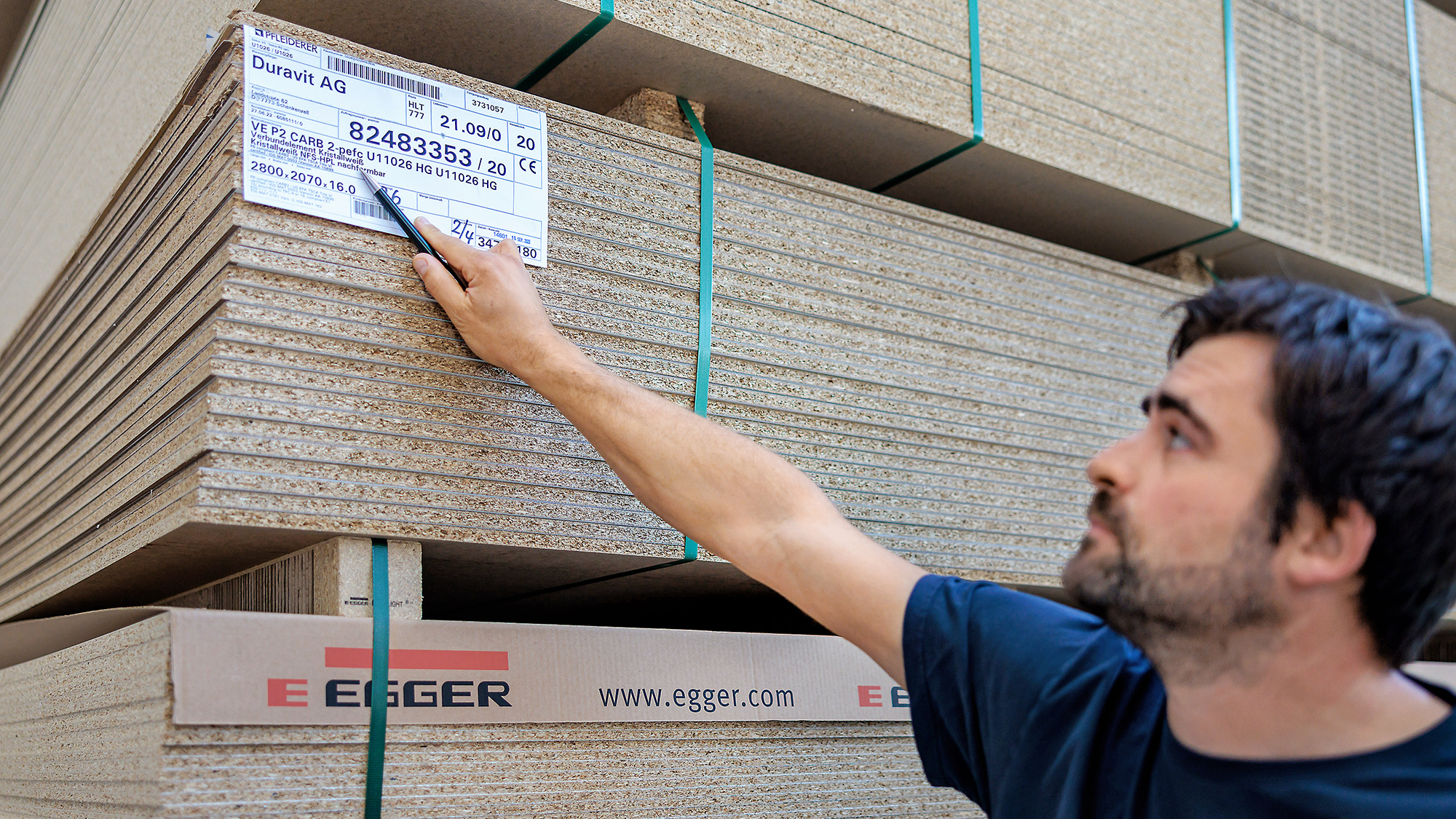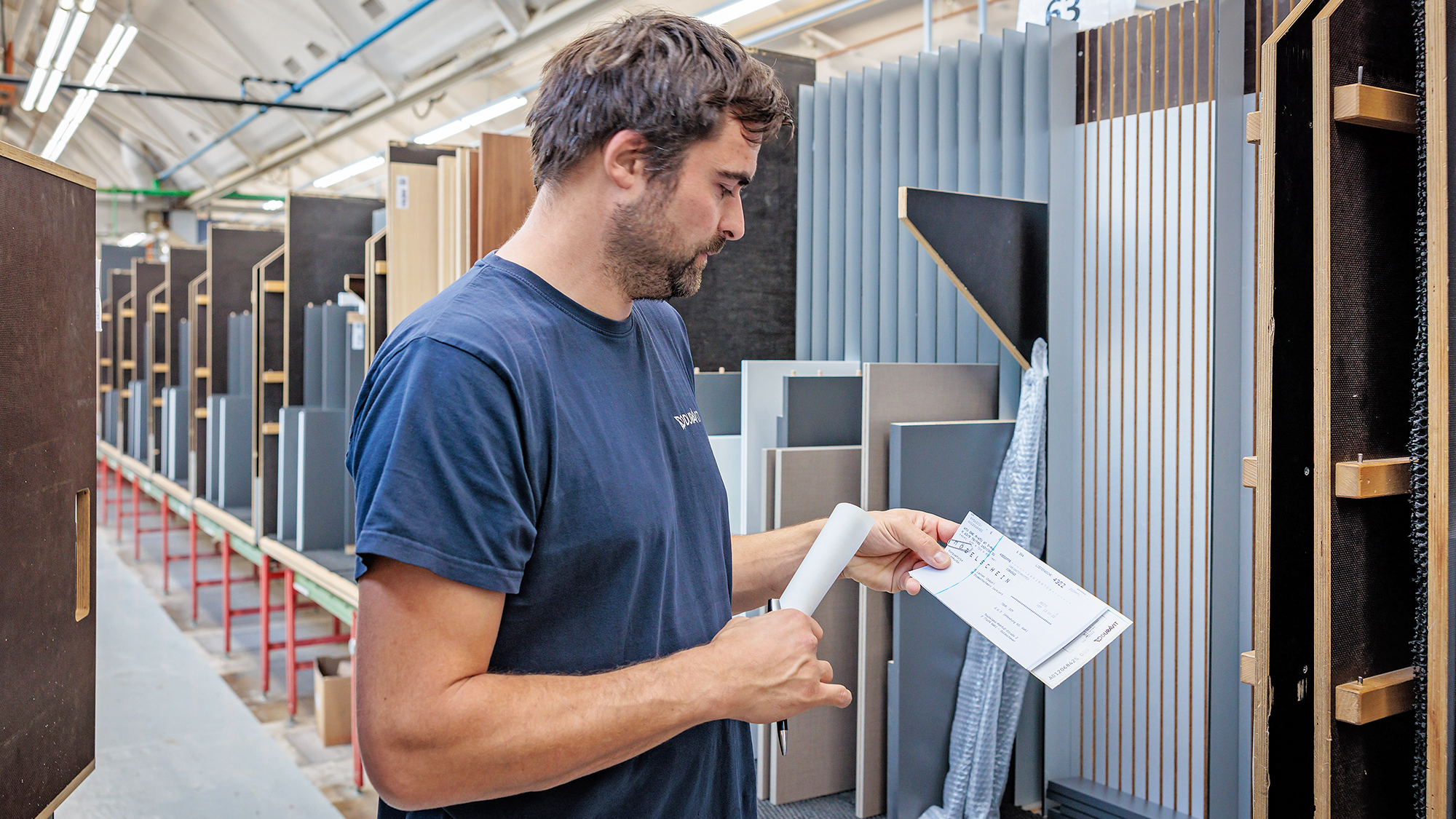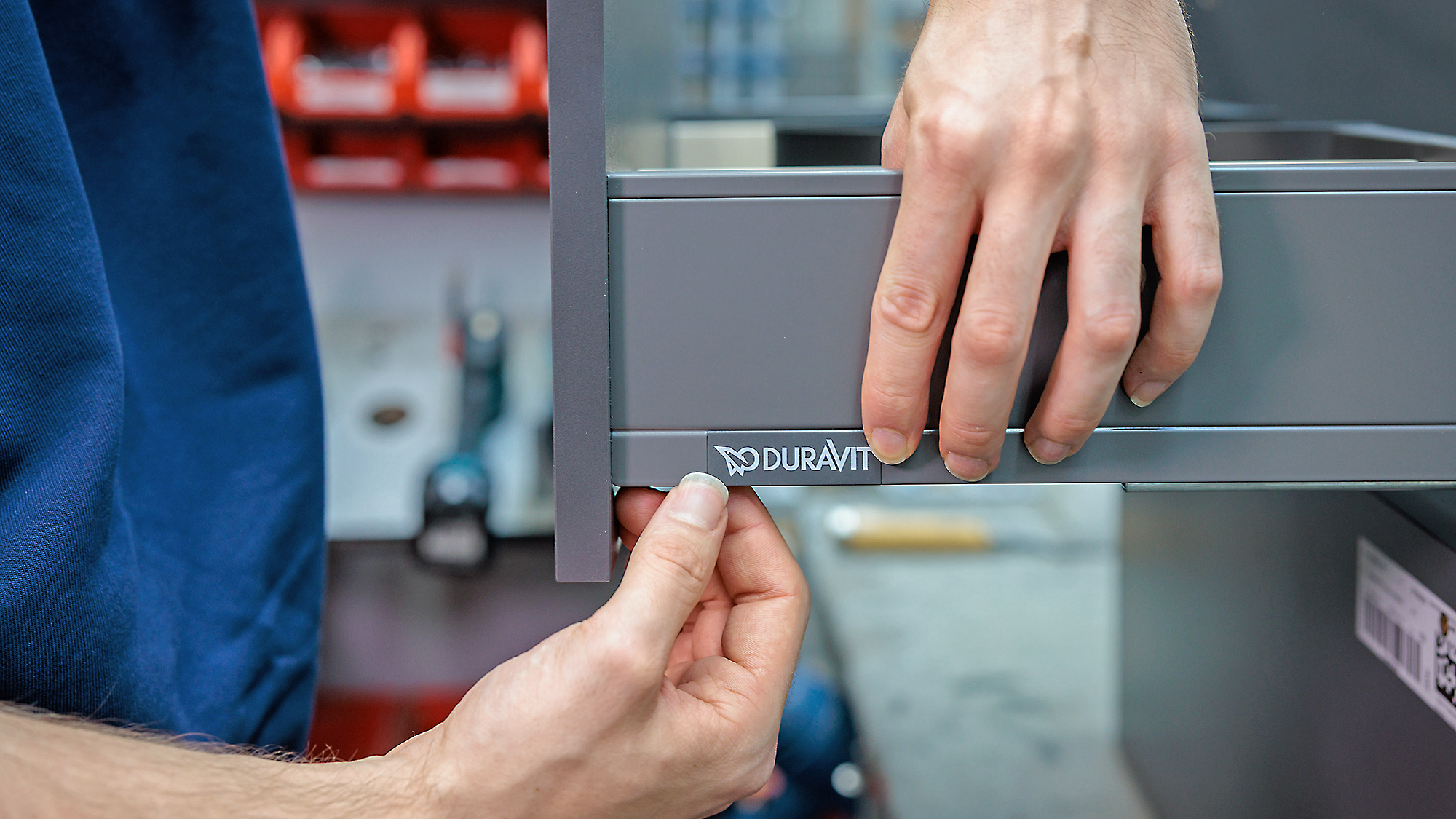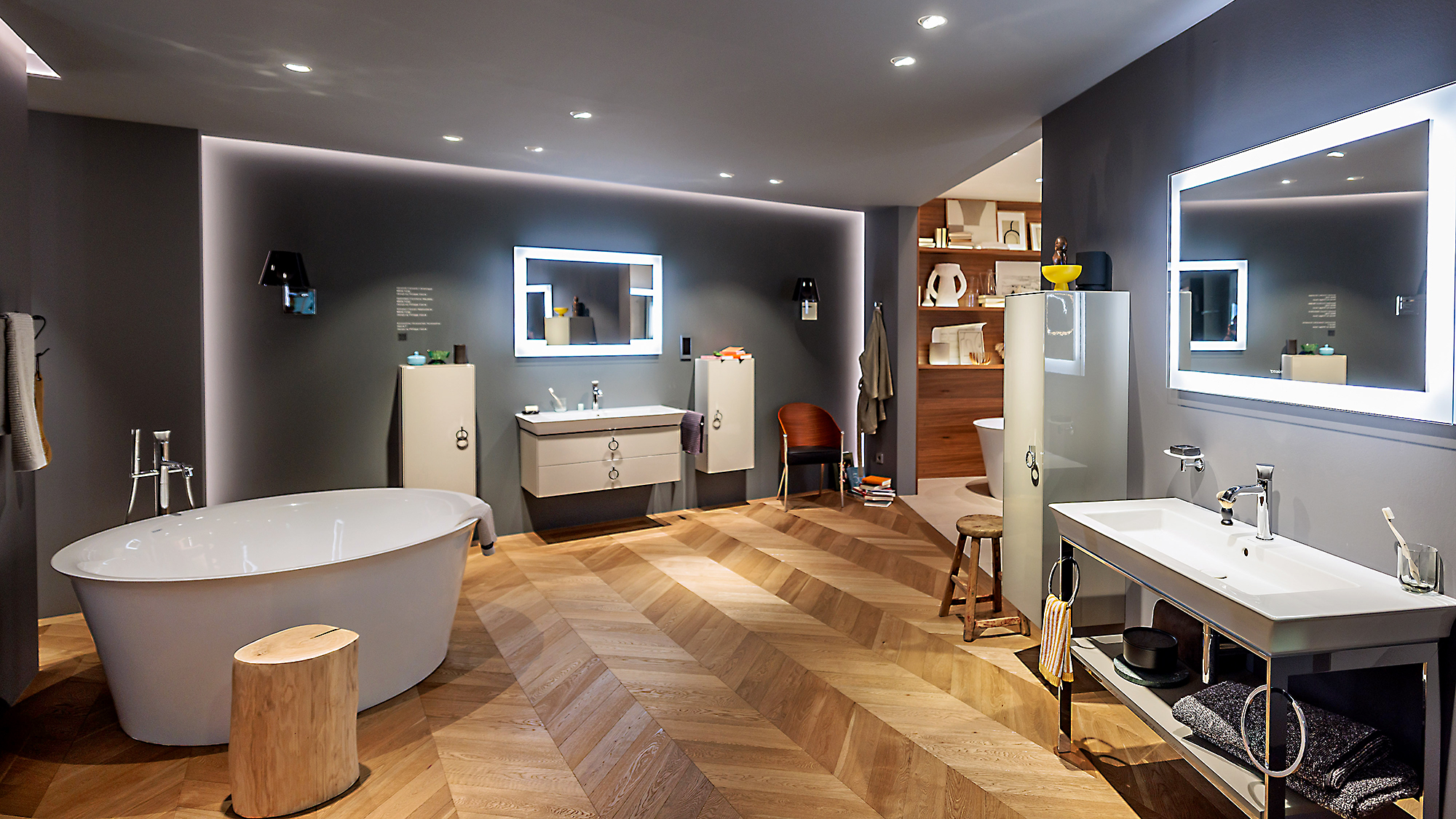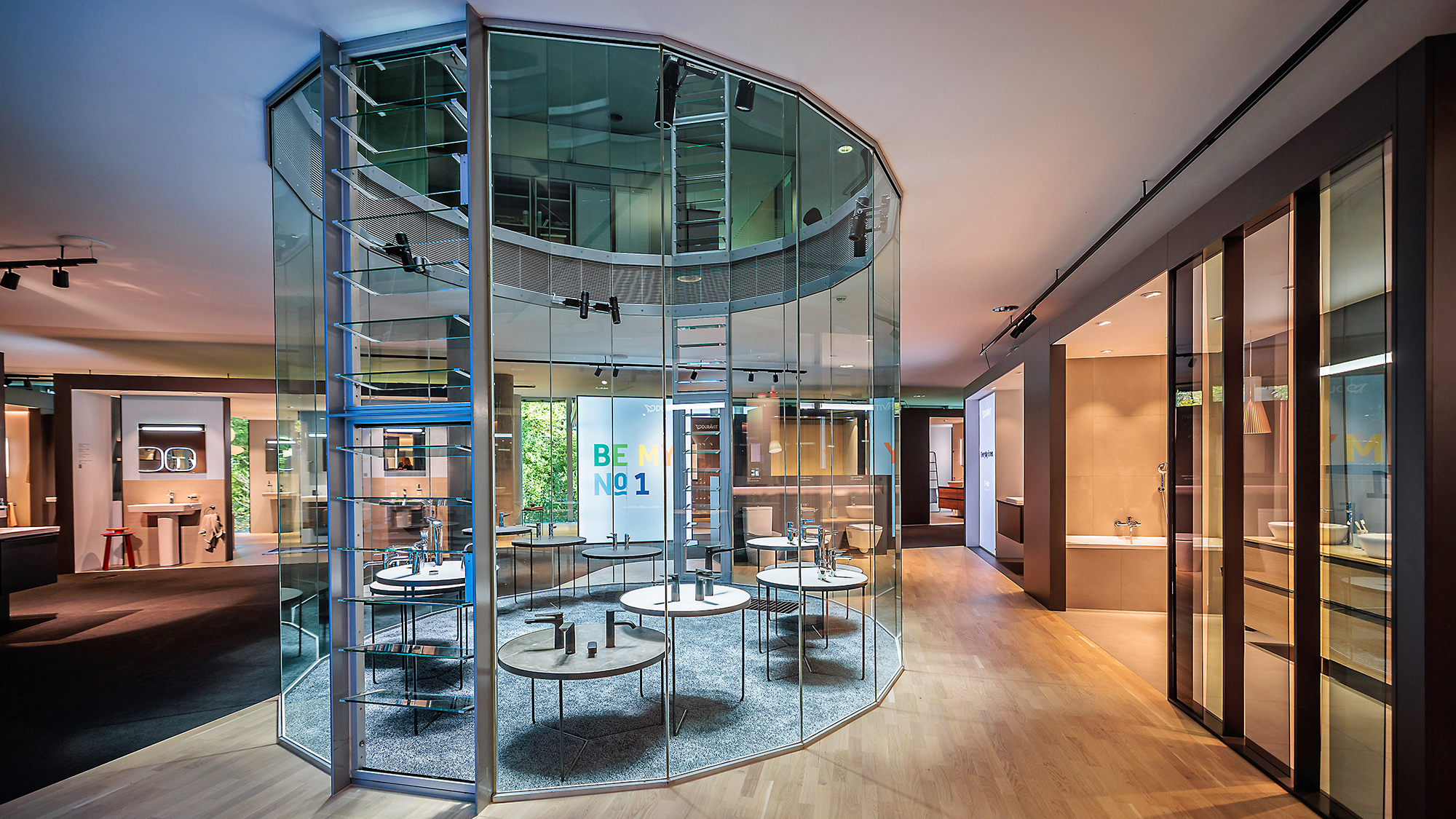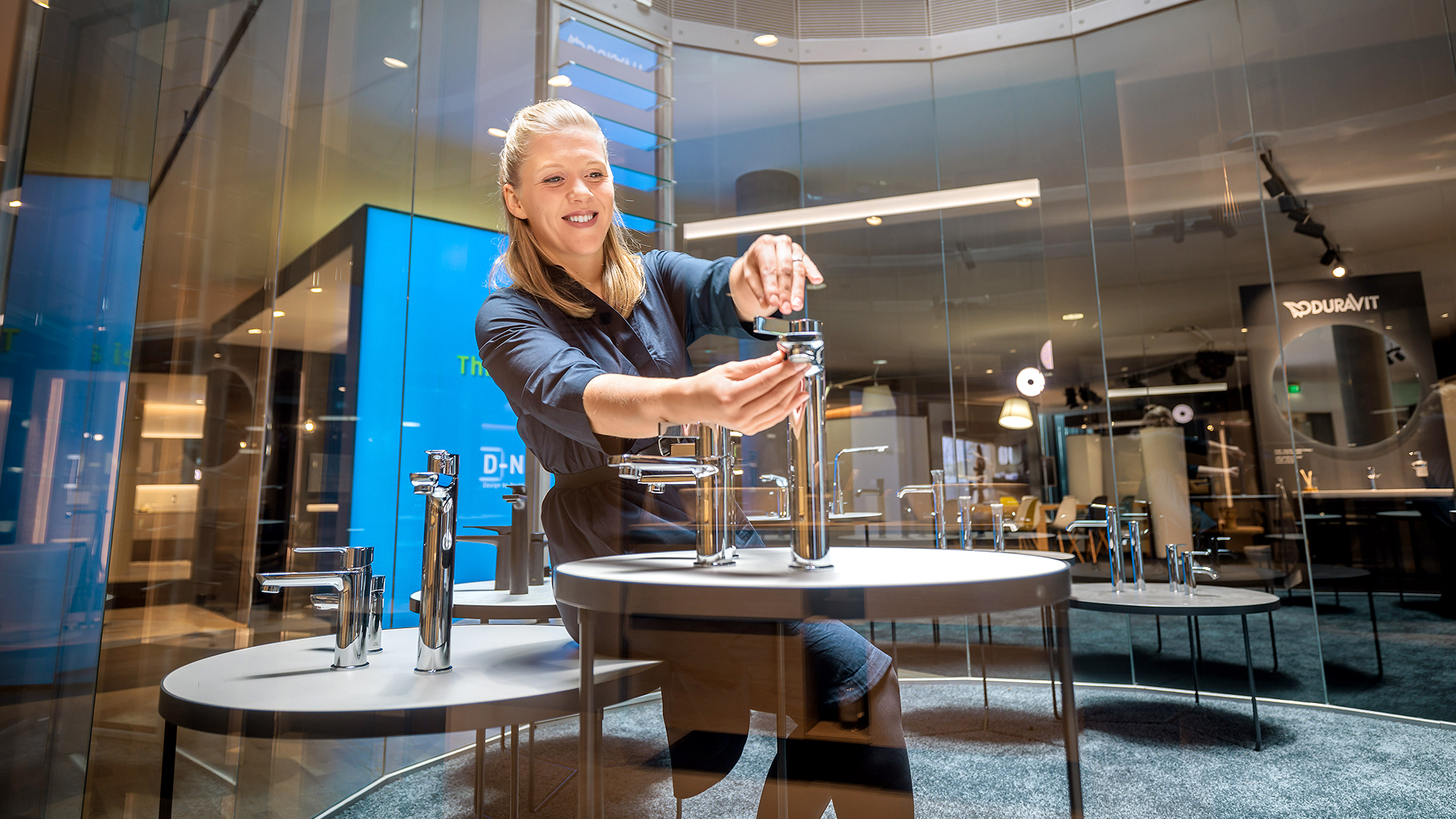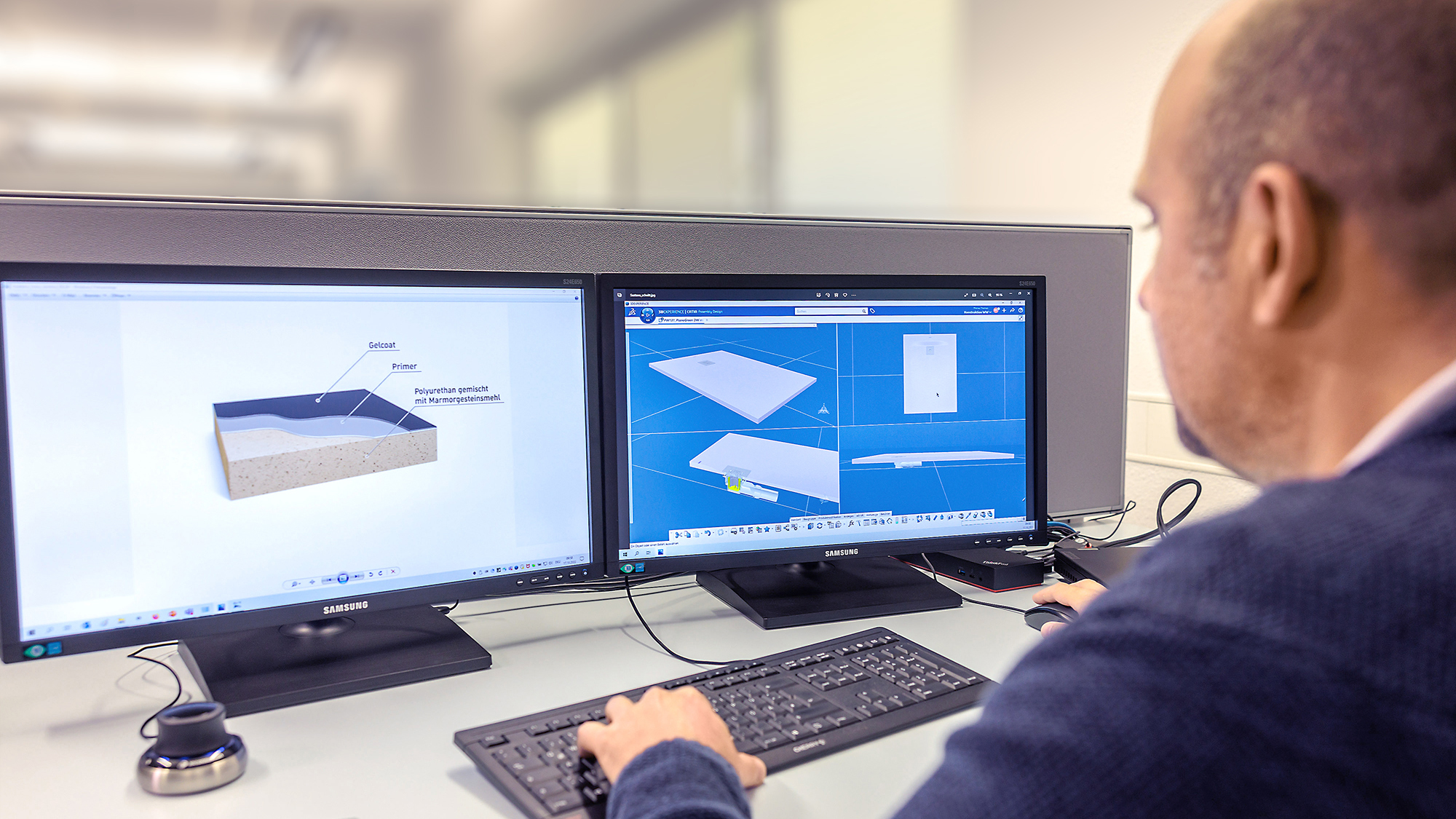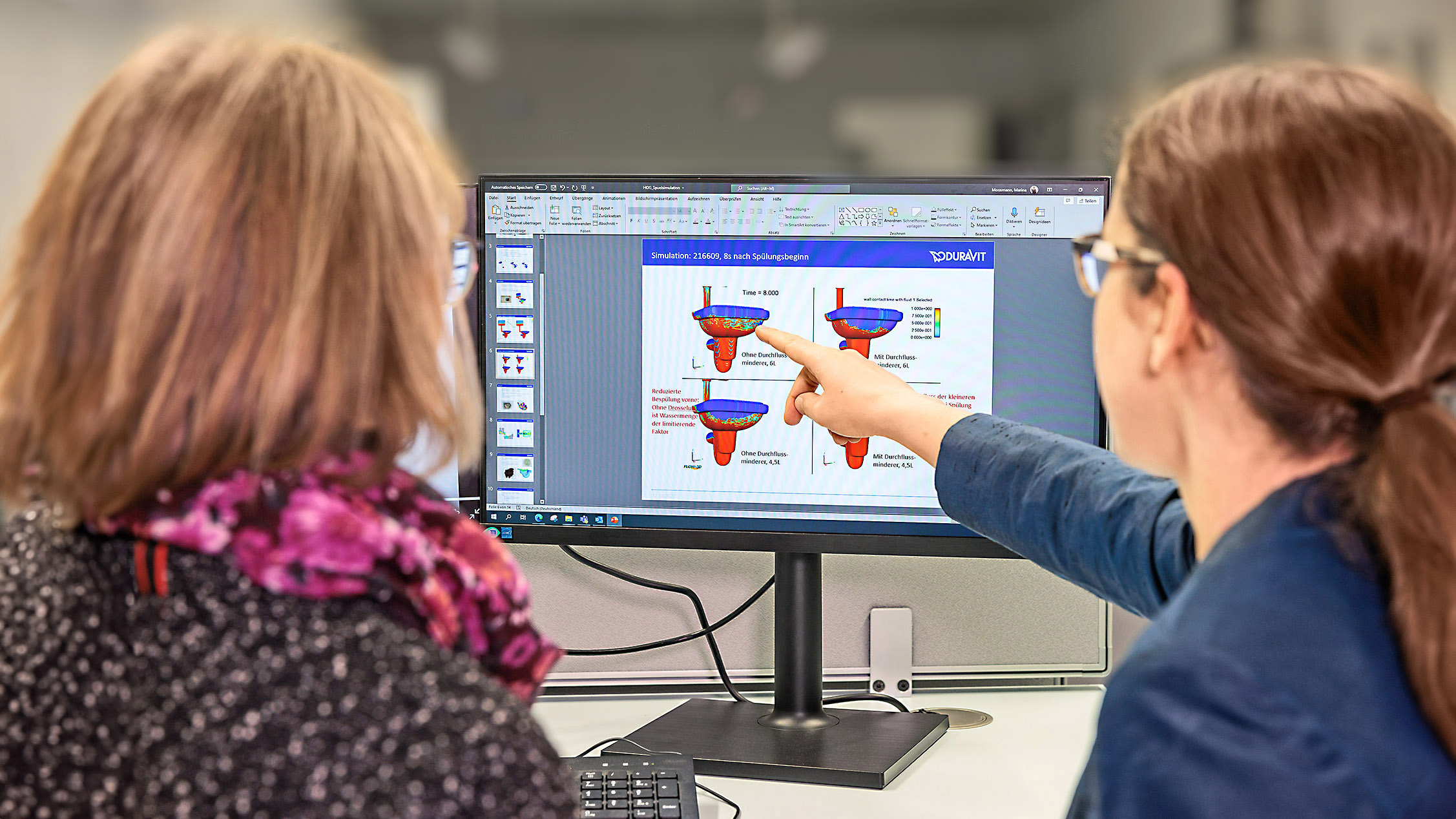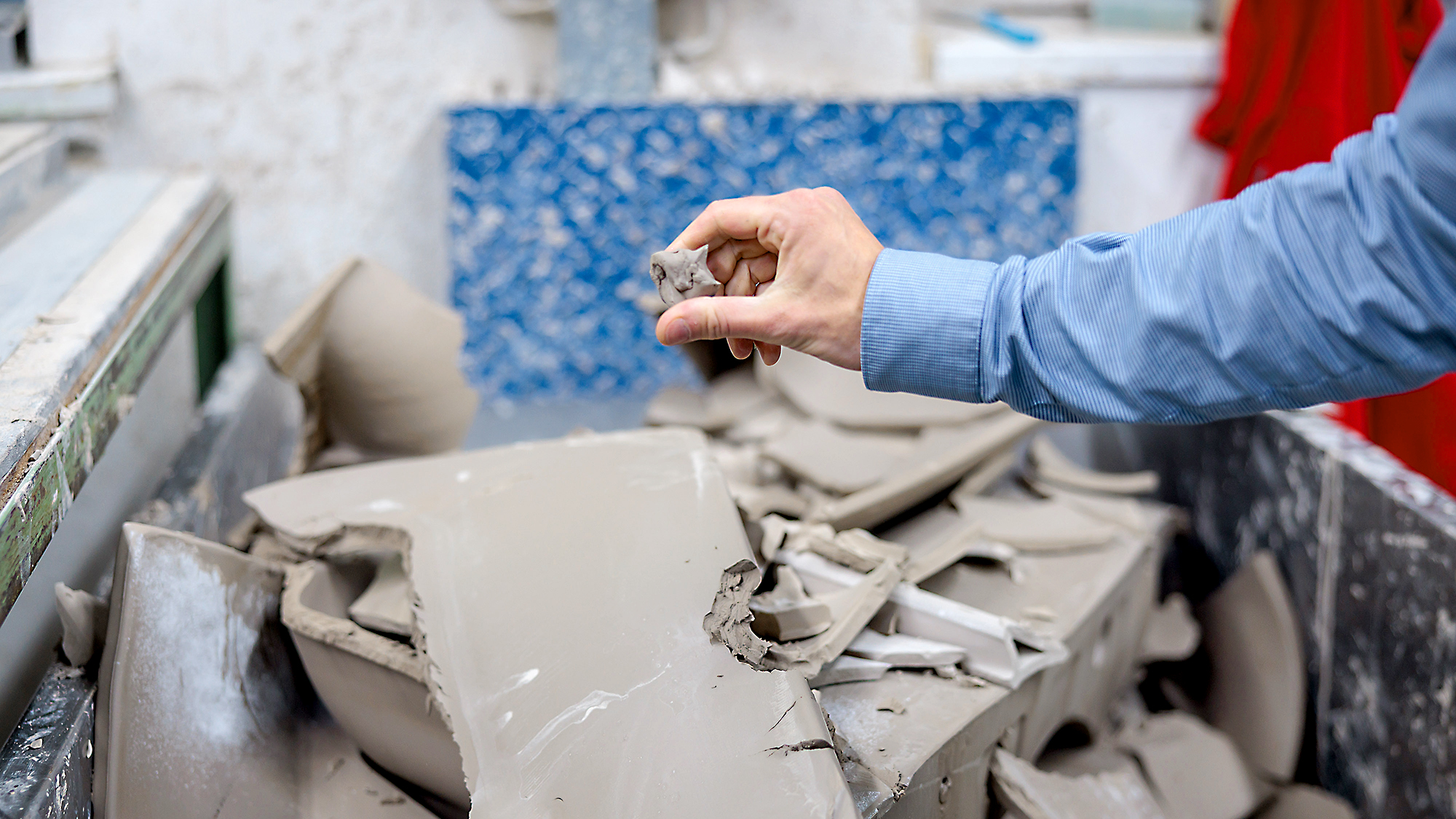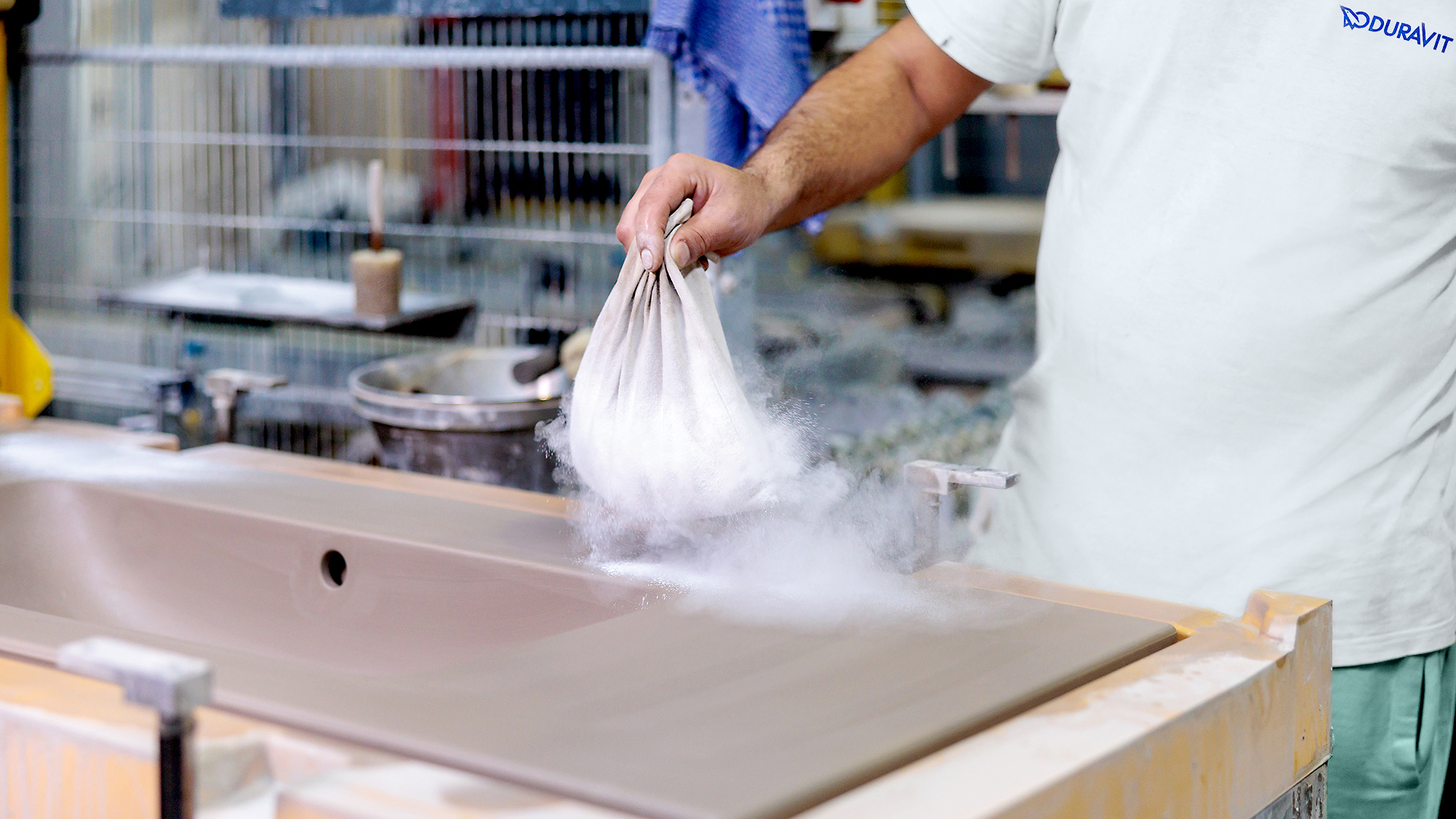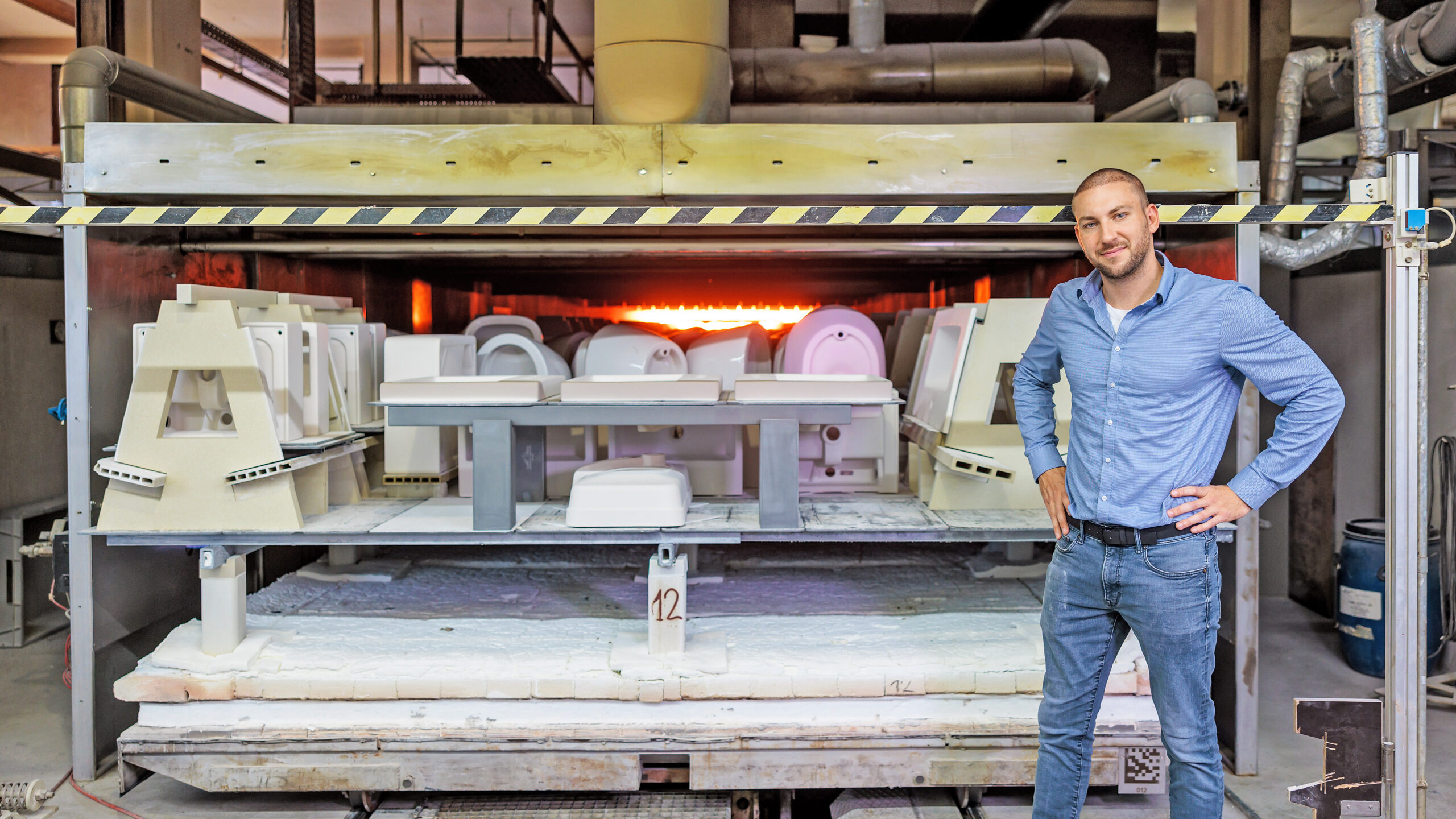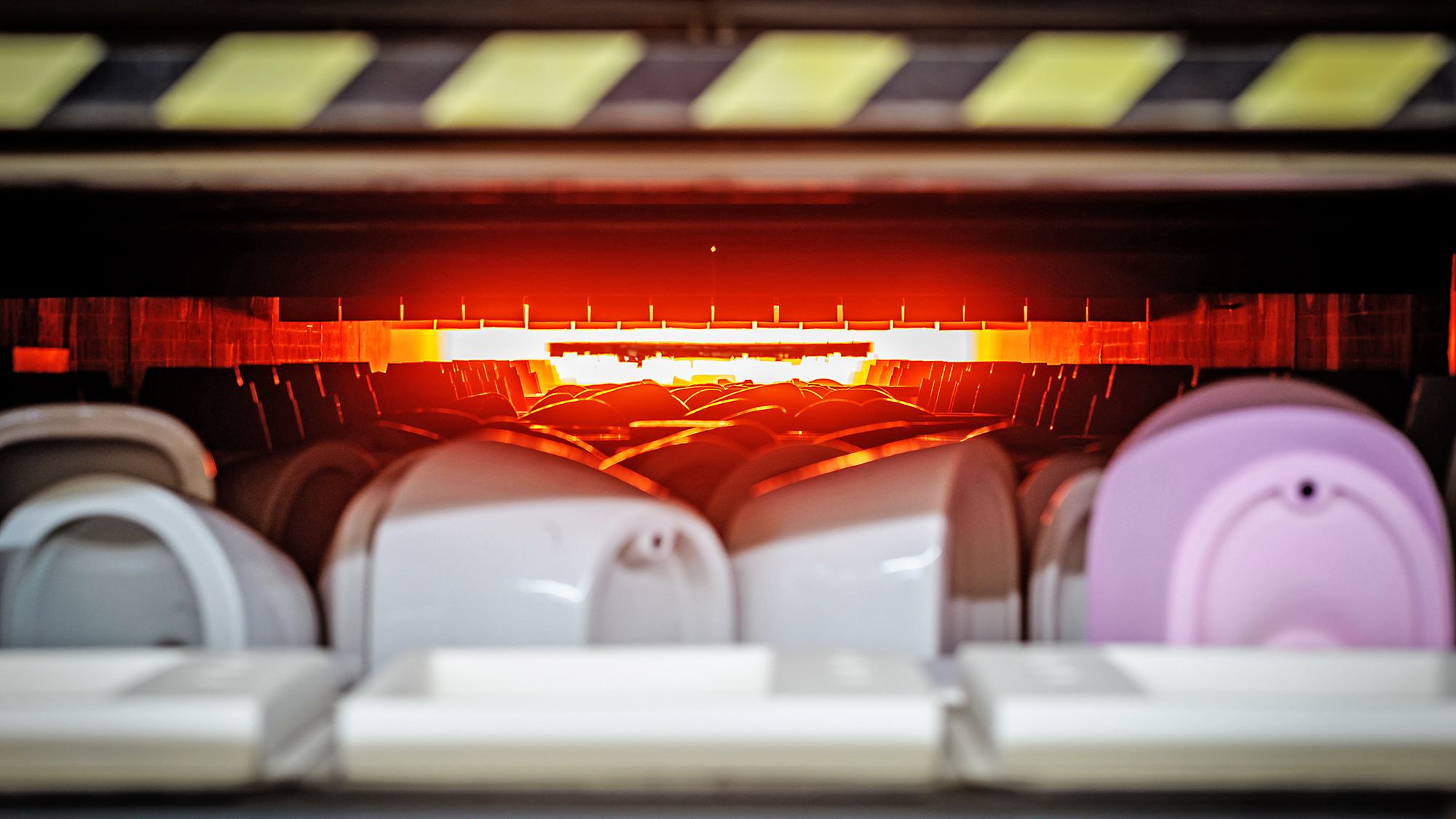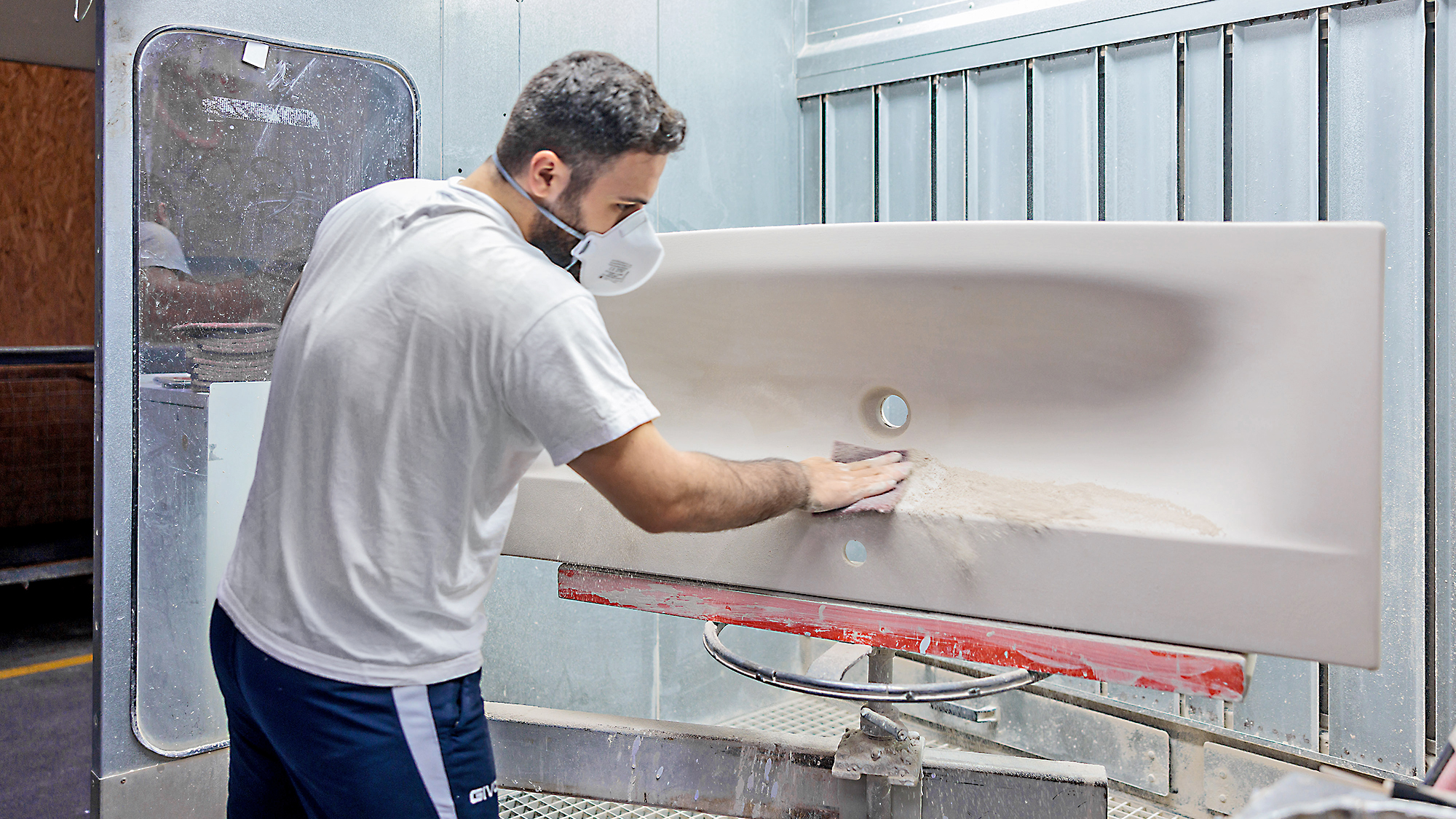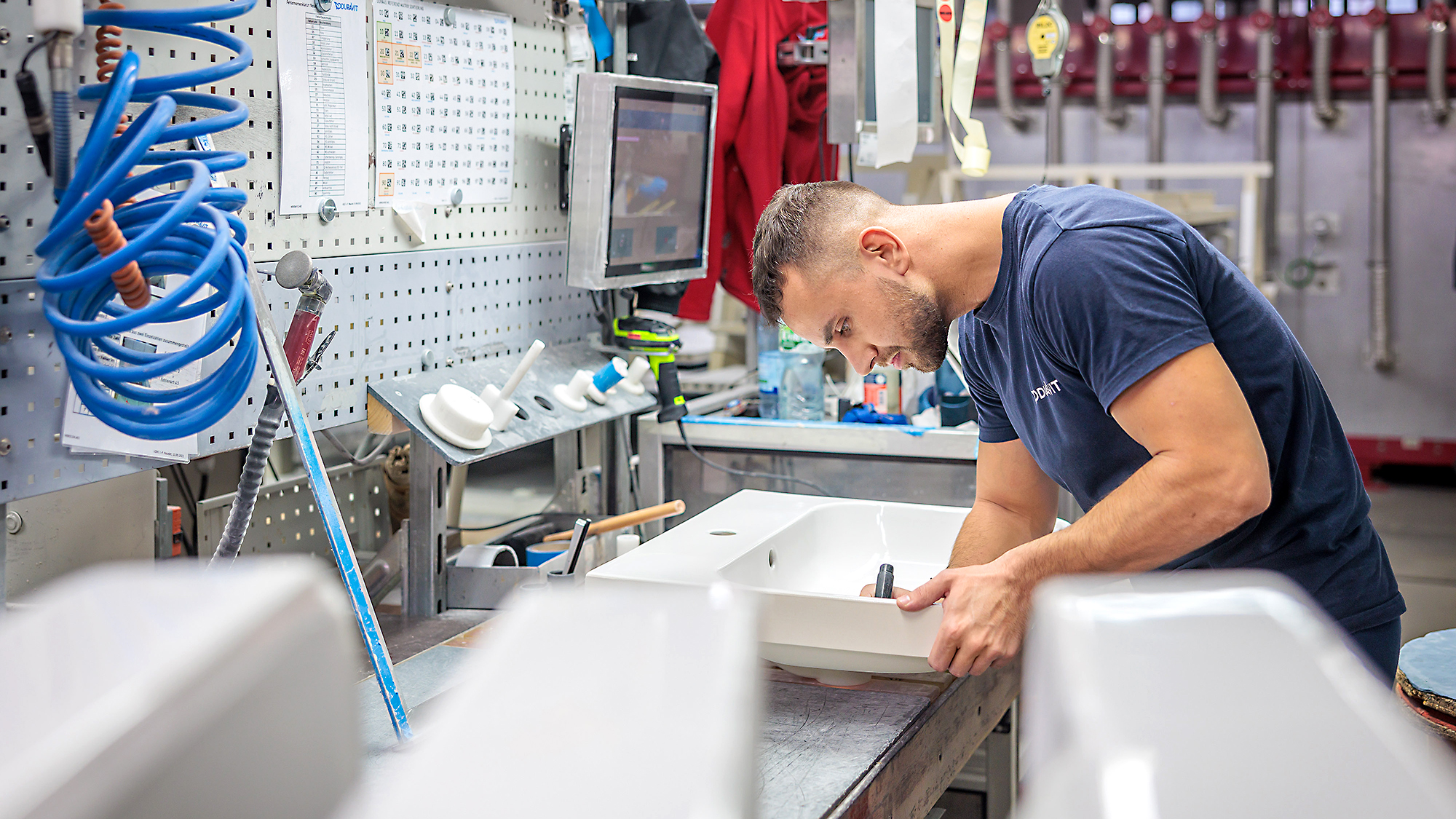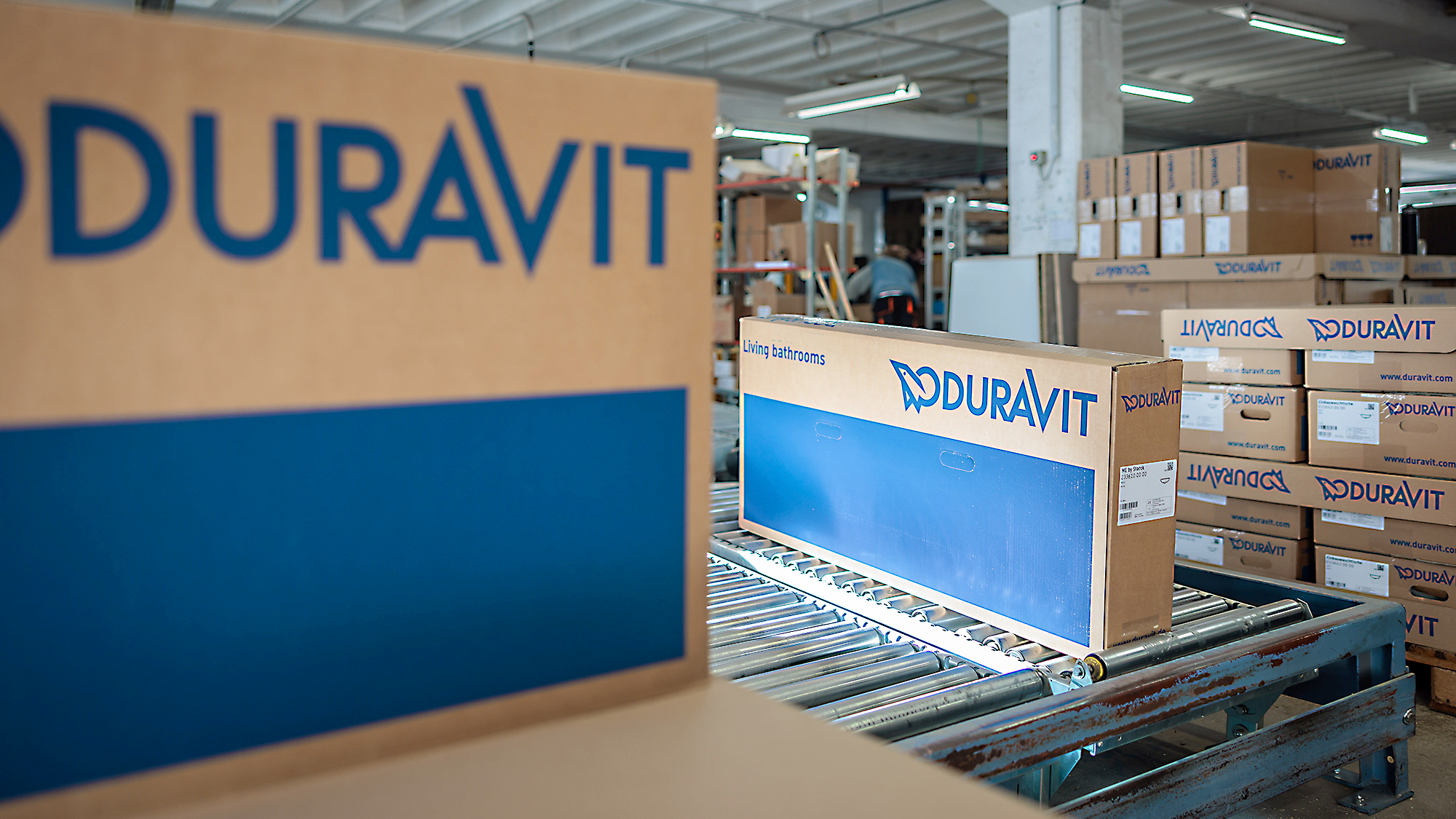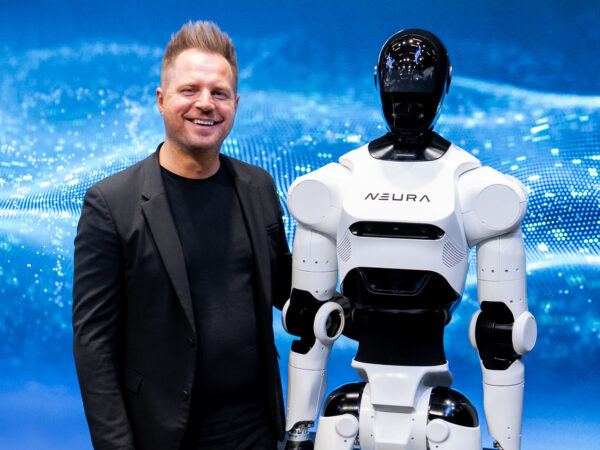Water Power — The Source of Success
Sustainability has been an integral part of Duravit’s DNA for two centuries now. Long-lasting products, careful use of resources, especially of water, and avoidance of carbon emissions are all part of everyday practice at this family-owned company. The focus now is on the future, with a strategy extending to the year 2045.
08/2023
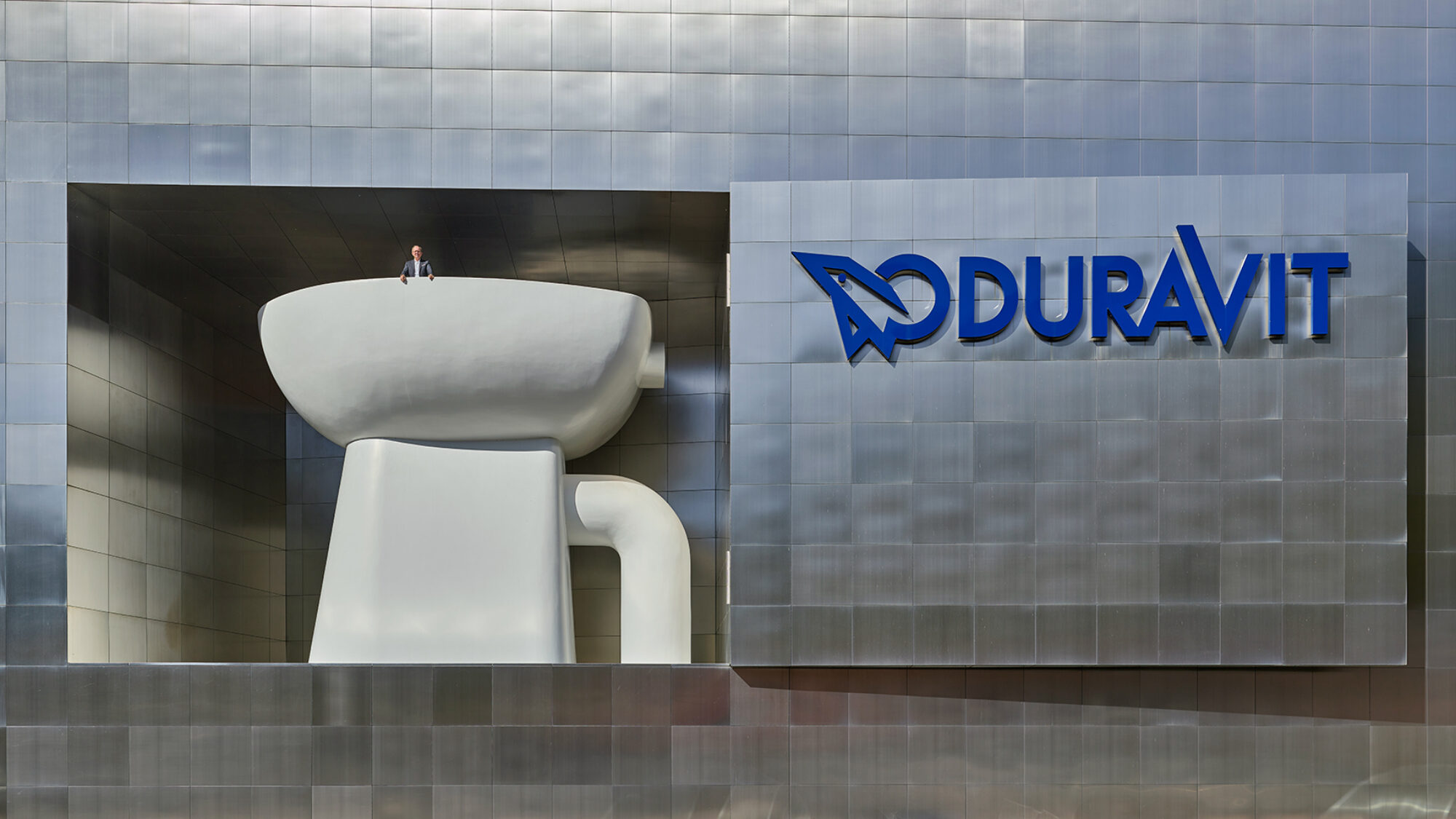
A mountain river known as the Gutach winds its powerful way through the picturesque town of Hornberg. Around 5,000 people live in this municipality in the central Black Forest region of southern Germany, a popular destination for vacationers. The source of the Gutach is a mere 12-mile hike away. Its turbulent path crosses the factory grounds of Duravit, a company deeply rooted in the area with more than two centuries of tradition. The river plays an important role in the energy-intensive ceramic production processes for this renowned global maker of bathroom and sanitary ware products. Duravit places a premium on using water resources with as much care as possible. Ever since it was founded, the company has been committed to sustainable action. Sustainability, one might say, is in its genes.
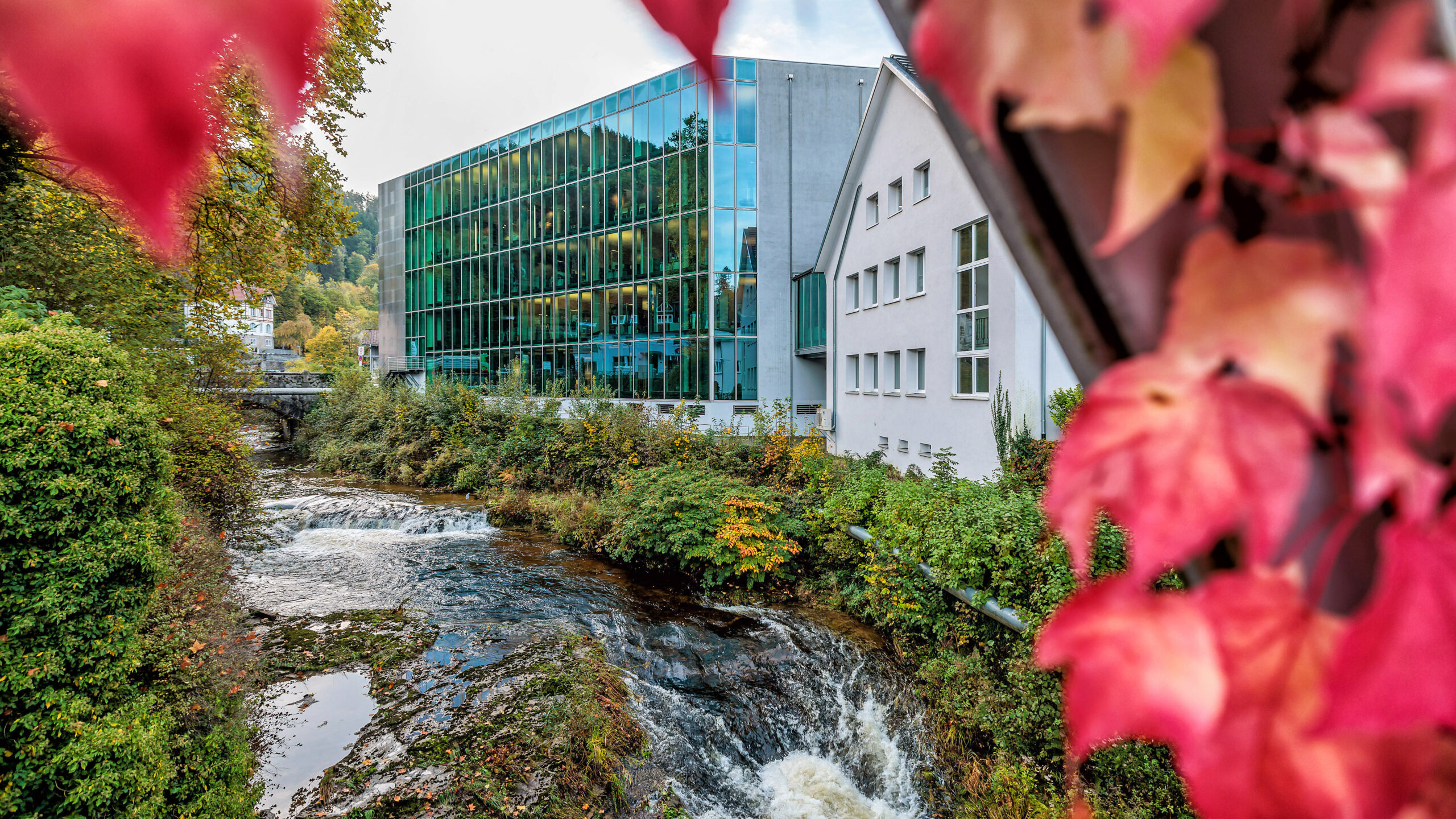
But that alone is not enough for Stephan Tahy, who became Duravit’s CEO in 2020. In order to advance sustainability in the future and to make it the guiding principle for all the company’s actions and future challenges, he has anchored it in Duravit’s strategic corporate goals and brand values. Duravit focuses on four of the 17 Sustainable Development Goals (SDGs) defined in the United Nations’ “Agenda 2030”: responsible consumption and production, clean water and sanitation, climate action, and good health and well-being. The company’s overarching sustainability goal is to become carbon-neutral by 2045.
Designer Bathrooms: From the Black Forest to the World
“Dura” is the core of the mission
The focus on sustainability is already evident in the Duravit brand name. It contains the word “dura,” which stands for longevity — and therefore a sustainable use of resources. It is unsurprising, therefore, that the company is decidedly opposed to a throwaway mentality. “That’s one of our greatest contributions to sustainability,” says Tahy. “We stand for products you can enjoy for a lifetime.” The family-owned company describes itself as the only manufacturer to give customers a lifetime guarantee for its ceramic products. In addition to sanitary wares, Duravit has been producing high-grade bathroom furniture since 1992 at its plant in Schenkenzell, around 20 miles from the main site in Hornberg. Here, too, the company places a priority on long service lives and on wood from domestic sources with PEFC-accredited and thus sustainable forestry.
Outstanding design that wins multiple awards has been one of Duravit’s unique selling points for decades. It joins sustainability, excellence, and well-being to form the brand’s four core values. “Our aim is to create timeless design,” says Tahy. “So we don’t go running after the latest trend or looking to add frills. We say that timeless design is part of our very DNA.” Duravit therefore cultivates long-term global relationships with iconic designers like Philippe Starck, which ensure the enduring quality of its products.
In addition to the priority on durability for its products, the company devotes considerable attention to recycling. That starts back in the product development stage. “Each new product will now be critically examined with respect to sustainability,” says Tahy with emphasis. These efforts have already produced a showcase product: Sustano, the first recyclable mineral-composite shower tray. It represents a genuinely new development on the market thus far. At the company’s eastern German site in Meißen, more than 200 tons of raw materials are centrifuged out of the mass of material in the waste flow and channeled back into production. The centrifuge scheduled for installation at the Hornberg site is expected to recover nearly 10 percent of the material used as of 2024, amounting to 550 tons a year at an annual production volume of around 6,500 tons. Recyclability is also high on the agenda for shipping and delivery. Packaging materials are made to be as recyclable as possible, with a continuous reduction in the share of plastics.
Every drop counts
As for water needs and use, Duravit can already point to a number of sustainability-related achievements. The ceramics maker has reduced the volume of water needed to flush its toilets from 6 to 4.5 or 3 liters. The toilets it has sold in Europe over the past decade have therefore saved around 290 million cubic meters of water a year — with no decline in the quality of the flushing process. But as Tahy insists, “We’re not yet satisfied. We keep working on the technology in order to lower water consumption even further in the future.” The company has also succeeded in optimizing how it uses water for production. A circulation system at the Hornberg site already recycles 60 percent of the water from the production process back into use. And one of the CEO’s special concerns is to ensure clean drinking water for all of his employees throughout the world, especially in regions like the site in India where clean drinking water is by no means a given. A water intake facility on the factory grounds there provides employees and their families with high-quality potable water.
Climate-neutral plant in Canada
The CEO has also set an ambitious target for protecting the climate. Duravit wants to be entirely carbon neutral by 2045 — along its entire value chain. This is no small matter, because ceramics production plants are still strongly dependent on gas as the fuel for heating their kilns. “Carbon neutrality by 2045 might not look very ambitious at first glance,” admits Tahy. “But in fact it is, because reaching this goal requires a major technological advance. We have to define new ways of firing ceramics, and are in the process of putting a quantum leap into practice.”
On July 13, 2023, a major milestone was passed on the road to a sustainable future. That was the day the company laid the cornerstone in Matane in the Canadian province of Quebec for the world’s first climate-neutral ceramics production site. The plant is expected to make 450,000 ceramic pieces a year for the North American market. Duravit is assuming a pioneering role here, because this will be the sector’s first kiln to run on electricity from renewable hydropower. Compared to conventional gas kilns, it will save more than 9,000 tons of CO₂ a year at full capacity. Moreover, all the raw materials will be sourced directly from Canada and the USA, which means short transport distances and more sustainable logistics — as well as additional carbon reductions of more than 1,500 tons a year. “We are very proud of our trailblazing role in promoting sustainability for the sanitary ware industry and addressing the challenges posed by climate change,” says Tahy. “We’re setting standards for innovative solutions in a sector known for high energy needs.”
Ready for green hydrogen
Duravit has laid the technical foundations for integrating green hydrogen as soon as it becomes available on the market. Simulations have already been run in a test project with Linde, the world’s leader on the market for industrial gases. This could reduce the future need for fossil fuels in production. Another major step on the road to climate neutrality is the plan to have solar power supply 50 percent of the electricity needed at all the sites worldwide.
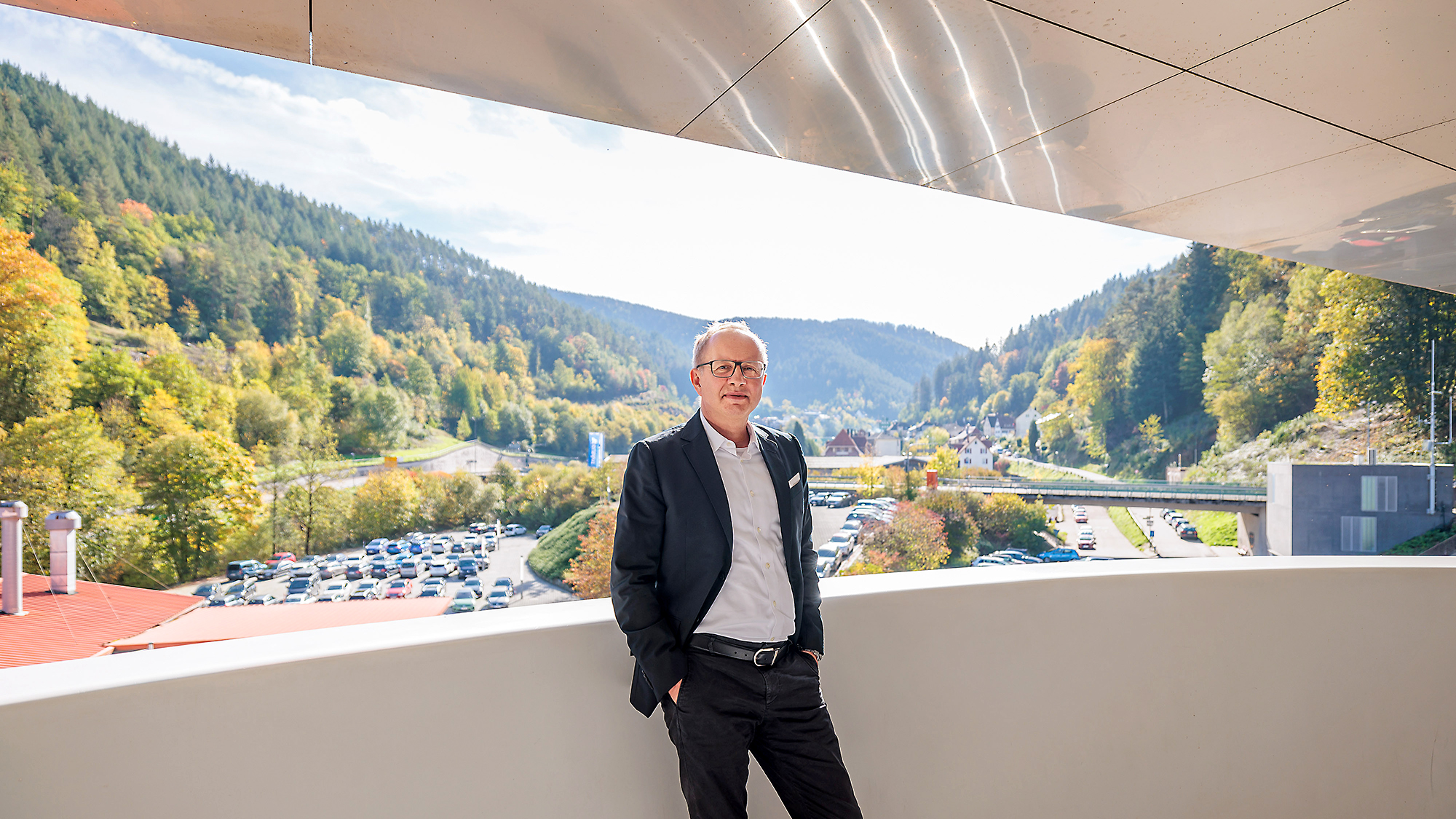
To keep transport routes as short as possible and thereby minimize the associated carbon emissions, the company has been relying for decades now on its proven “local for local” strategy and regional proximity to producers and suppliers. “Duravit has always tried to have its sites make the greatest possible use of local resources,” observes Tahy. Local roots are also evident in the company’s commitment to its home site in Hornberg. For example, the ceramics producer provides financial support for humus acquisition to farmers in the Black Forest conservation area. Farmers use the organic matter to enrich regenerative soil, which in turn binds CO₂. As Tahy explains, “We contribute to sustainability right at our site — and this type of commitment has an authentic quality that embodies our approach.”
"Duravit’s Road to Sustainability"
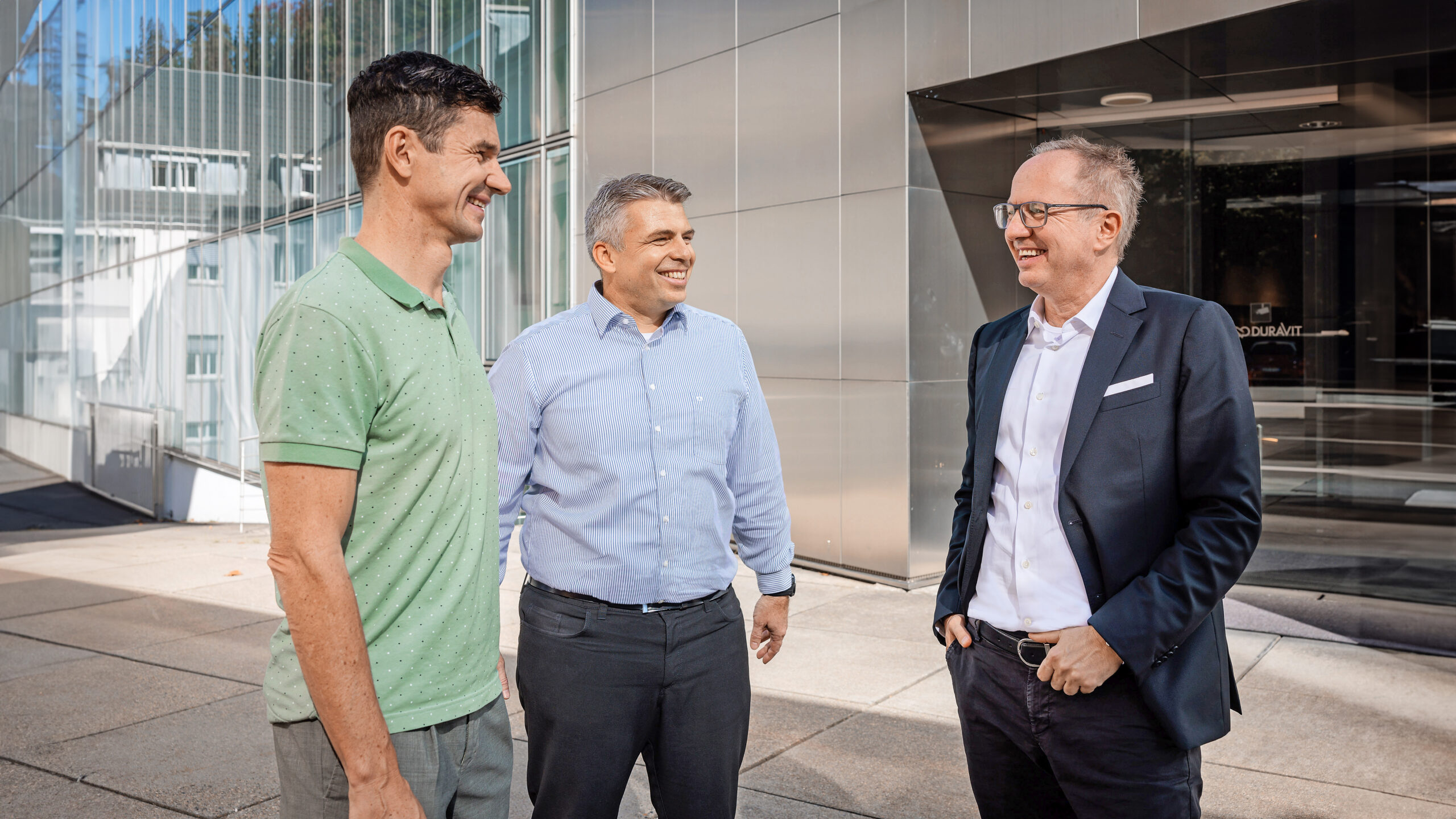
Keeping their own house in order
Authenticity ultimately plays the key role in Tahy’s sustainability campaign. “We’ve always tried to find the right path for Duravit. And that means being honest and accountable in everything we do.” For Tahy, authenticity means embracing sustainability in all the company’s activities, both external and internal — and actively involving all the employees. “We want sustainability to be evident in everything we do. We want to be very clear that we’re pursuing it on the strategic level as well. And finally, we want to make people aware that sustainability is something that starts at home and spreads out into the world at large.” With internal actions like the “Putzete” cleaning campaign that was launched in 2022, Duravit draws attention to the topic and gives everyone a chance to join in. The campaign invites employees to clean the area around the company grounds, thereby making a personal contribution to ensuring it remains in good shape. For inhabitants of the Black Forest, that’s actually a point of honor — the boss doesn’t have to ask them twice.
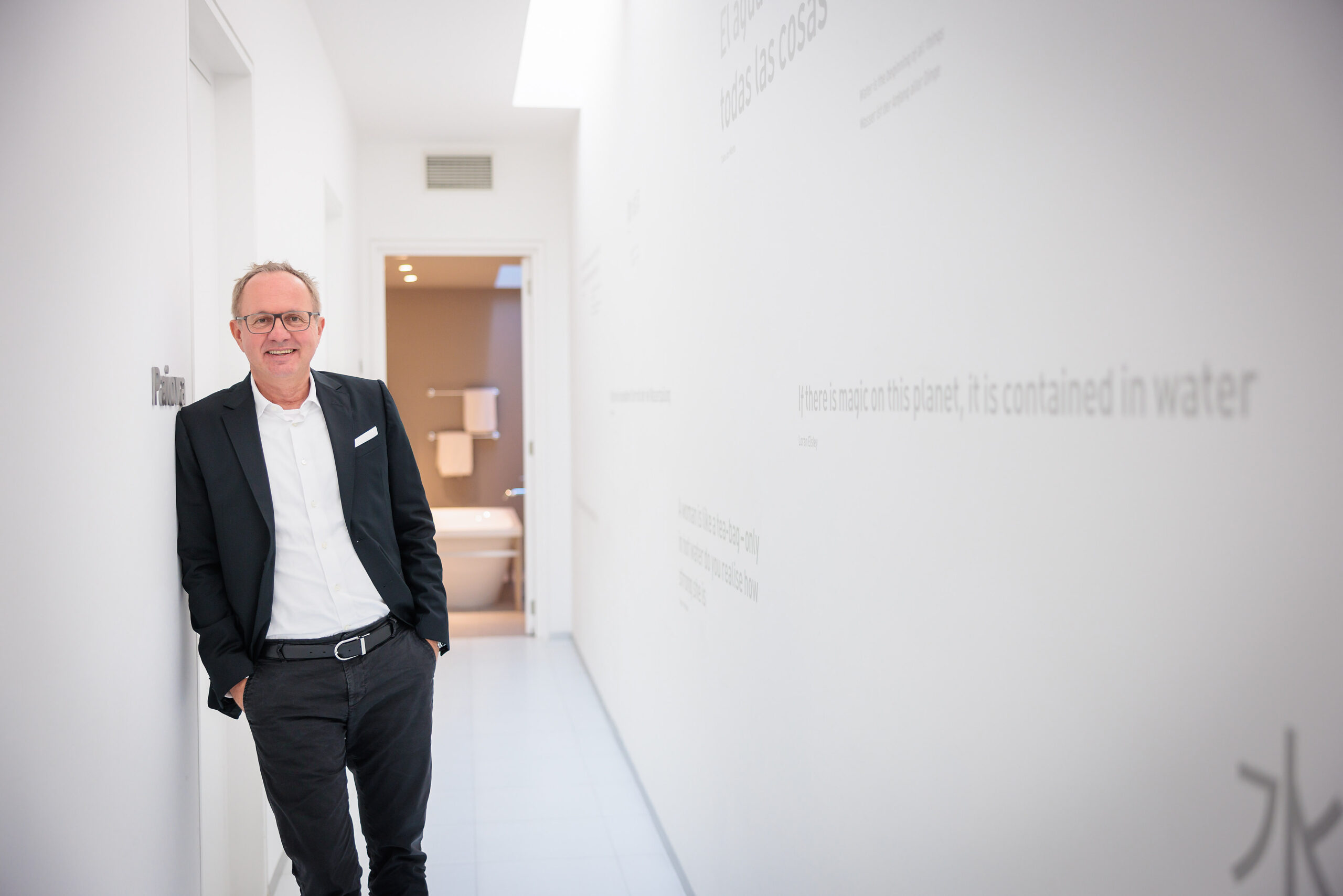
Success drives sustainability
For Stephan Tahy, profitability and sustainability are not conflicting aims. Quite the contrary, in fact. In his eyes, economic success and growth are accelerators for running and funding sustainability projects — and thereby enabling the company to actively pursue and reach its long-term sustainability goals. After all, the more a company grows, the more financial resources it has to convert technologies, promote innovations, and build solar power facilities. As the CEO explains, “Duravit has always understood the importance of balancing profitability and sustainability — with a long-term perspective. We’ve set ambitious sustainability targets, but we’ve also only taken steps that are actually possible. We are meeting both challenges: profitability and growth on the one hand, and sustainability on the other.”
